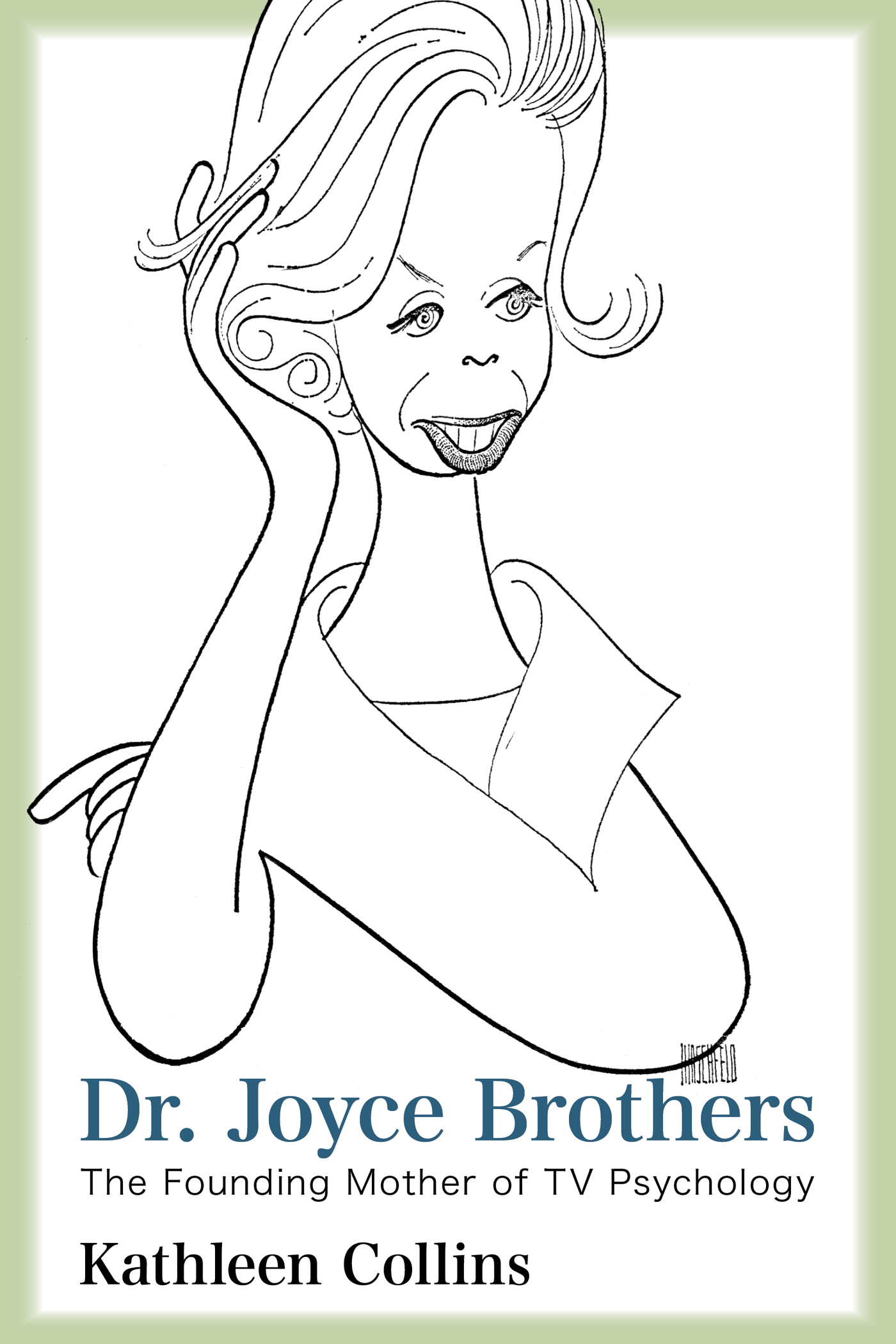Dr. Joyce Brothers
The Founding Mother of TV Psychology
Kathleen Collins
ROWMAN & LITTLEFIELD
Lanham Boulder New York London
Published by Rowman & Littlefield
A wholly owned subsidiary of The Rowman & Littlefield Publishing Group, Inc.
4501 Forbes Boulevard, Suite 200, Lanham, Maryland 20706
www.rowman.com
Unit A, Whitacre Mews, 26-34 Stannary Street, London SE11 4AB
Copyright 2016 by Rowman & Littlefield
All rights reserved. No part of this book may be reproduced in any form or by any electronic or mechanical means, including information storage and retrieval systems, without written permission from the publisher, except by a reviewer who may quote passages in a review.
British Library Cataloguing in Publication Information Available
Library of Congress Cataloging-in-Publication Data
Names: Collins, Kathleen, 1965 author.
Title: Dr. Joyce Brothers : the founding mother of TV psychology / Kathleen Collins.
Description: Lanham : Rowman & Littlefield, 2016. | Includes bibliographical references and index.
Identifiers: LCCN 2016002131 (print) | LCCN 2016005522 (ebook) | ISBN 9781442268692 (hardback : alk. paper) | ISBN 9781442268708 (electronic)
Subjects: LCSH: Brothers, Joyce. | Television personalitiesUnited StatesBiography. | PsychologistsUnited StatesBiography.
Classification: LCC PN1992.4.B77 C86 2016 (print) | LCC PN1992.4.B77 (ebook) | DDC 791.4502/8092dc23
LC record available at http://lccn.loc.gov/2016002131
 TM The paper used in this publication meets the minimum requirements of American National Standard for Information Sciences Permanence of Paper for Printed Library Materials, ANSI/NISO Z39.48-1992.
TM The paper used in this publication meets the minimum requirements of American National Standard for Information Sciences Permanence of Paper for Printed Library Materials, ANSI/NISO Z39.48-1992.
Printed in the United States of America
In memory of Abby Stein
Shes like some lens, a filter for that great unorganized force that some in the industry have spent their whole lives trying to locate and focus.... This force, ladies, gentleman, is the capacity of facts to transcend their internal factual limitations and become, in and of themselves, meaning, feeling. This girl not only kicks facts in the ass. This girl informs trivia with import. She makes it human, something with the power to emote, evoke, cathart. She gives the game the simultaneous transparency and mystery all of us in the industry have groped for, for decades. A sort of union of contestantorial head, heart, gut, buzzer-finger.
David Foster Wallace, Little Expressionless Animals, Paris Review, Spring 1988
Television directly reflects the moral, political, social, and emotional need states of our nation.
Lauren Zalaznick, The Conscience of Television, TEDWomen 2010
Acknowledgments
For their enthusiasm, moral support, listening, and insight, I thank Andrea Volpe, Bob Yule, Tim Plant, Sue Kriete, Ron Simon, Rob Snyder, Katie LeBesco, Dana Polan, Stephanie Margolin, John Matteson, Debbie Nathan, and my most patient and loving champion and close reader, Gerard Trimarco. It would have been impossible for me to move to the second edit without the expertise of my dear friend Regina Marchi, who spent countless precious hours helping me revise. For space, money, and time, I thank Jay Barksdale for access to the New York Public Library Wertheim Room; financial assistance from the Office for the Advancement of Research at John Jay College and two PSC-CUNY awards, jointly funded by the Professional Staff Congress and the City University of New York, which enabled my research travel and image costs; and all the parties responsible past and present (including my colleagues at the Lloyd Sealy Library at John Jay College) for my ability to take a years fellowship leave to complete the manuscript without interruption.
I owe much gratitude to the librarians and archivists whose assistance was crucial to my research. Joyce Brotherss papers are collected at her undergraduate alma mater, Cornell University, and many linear feet of appreciation is reserved for the assistant director for technical services and curator of digital and media collections, Liz Muller, and her colleagues at the Rare and Manuscript Collections. While I spent only a few weeks to Dr. Joyces several life-defining years at Cornell, they had a significant impact on me as well, especially being able to stand before her numerous legendary file cabinets. Many thanks to Margie Compton, media archivist at the University of Georgia Libraries (UGA); Rosemary Hanes of the Moving Image section at the Library of Congress; David Leopold, creative director at the Al Hirschfeld Foundation; Ann Mosher of the Special Collections Research Center at Temple University Libraries; and John Calhoun, librarian at the Billy Rose Theatre Division of the New York Public Library for the Performing Arts.
I am so fortunate to have had my manuscript land with Stephen Ryan, senior editor at Rowman & Littlefield. He was enthusiastic from the get-go, and he and his colleaguesespecially production editor Jessica McCleary and assistant editor Andrea Kendrickexhibited valued wisdom, efficiency, and professionalism. I am honored to be an author with such a stellar publishing house.
The kind and willing people I interviewedLisa Brothers Arbisser, Sandy Brokaw, Paul Brownstein, Adrian Butash, Larry De Rusha, Lee Garfinkel, Tim Harper, Brian McCann, George Merlis, Margaret Muldoon, Elaine Rodino, Squire Rushnell, and Brian Stackmade Dr. Joyce come alive, and I am indebted to them for their time and sharing of their memories and insights about her personality and her career.
The warmth and encouragement of Dr. Joyces daughter, Dr. Lisa Brothers Arbisser, has been a sustaining force in my work on this book. I am grateful for her time and generosity and that of her husband, Dr. Amir Arbisser, and their daughter Talya Arbisser Gluskin for making valuable archival video and photographs available for research. I am so glad to finally be able to give Lisa a copy of this book, and even though it cannot do full justice to her mothers humanity, I hope it goes some distance in preserving her legacy.
Introduction
It goes unquestioned in our modern age that television is a place of emotional exhibitionism. Revealing intimate personal details before a live studio audience and millions of remote strangers does not seem unusual. While agony and advice columnists have ministered to the lost and confused for hundreds of years via the printed page, the reach of their words could not be compared to the impact of the twentieth centurys greatest mass media. Todays talk show hosts, like Dr. Phil and the women of The View, come at the end of a long broadcast tradition that can be traced back to one woman. The ambassador who brought the original endeavor to the airwaves, forever changing television and psychology, was born Joyce Diane Bauer, who famously became Dr. Joyce Brothers.
Brothers is an essential thread woven into the fabric of American and popular culture. Some readers will remember Dr. Joyce Brotherss early TV show on WNBC in the late 1950s and later a long-running radio call-in show. Others will recall her syndicated advice columns in their daily newspaper or regular installments in Good Housekeeping in the 1970s and 1980s. And others associate her with her appearances on sitcoms and late-night talk shows. Some will be too young to remember her but will likely have heard of her or would recognize her face. Each of these groups would do well to consider the mere fact that a person so firmly associated with these different media for half a century indicates an elemental status and an influential relationship with media history. Joyce Brothers is to media psychology as Julia Child is to TV cooking programsthe principal popularizer and the most iconic and synonymous. Each brought her expertise into the mainstream, democratizing and demystifying. Brotherss pioneering role in televisions entertainment-education continuum has been greatly underestimated, and she should be recognized as a standard bearer in American television culture who broke ground in numerous areas of the medium. In the introduction to the compendium
Next page
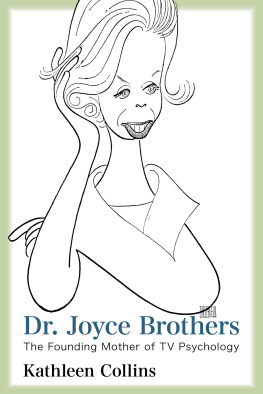

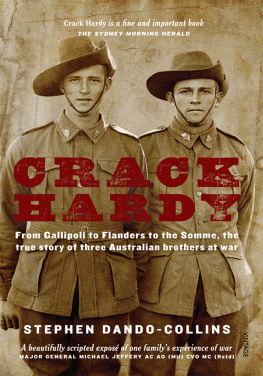
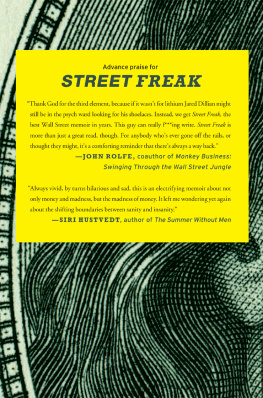
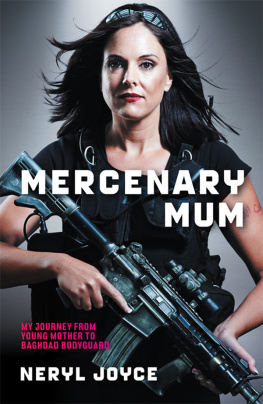
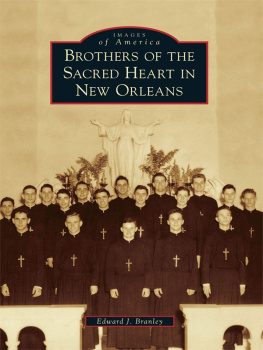
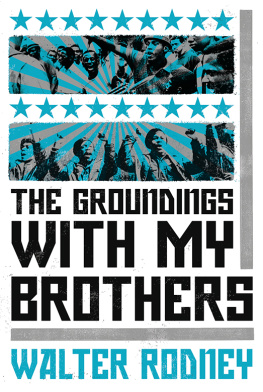
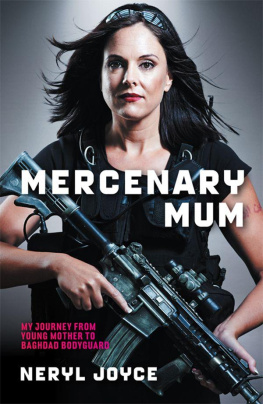
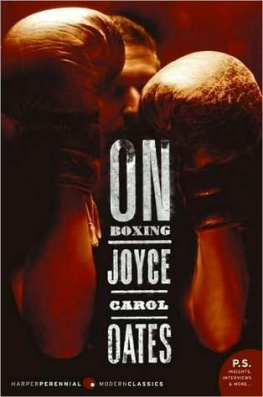
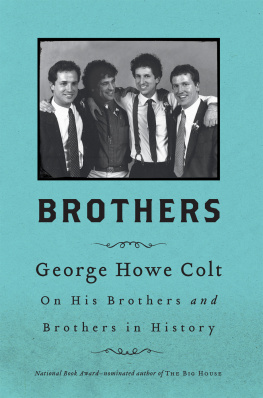
 TM The paper used in this publication meets the minimum requirements of American National Standard for Information Sciences Permanence of Paper for Printed Library Materials, ANSI/NISO Z39.48-1992.
TM The paper used in this publication meets the minimum requirements of American National Standard for Information Sciences Permanence of Paper for Printed Library Materials, ANSI/NISO Z39.48-1992.